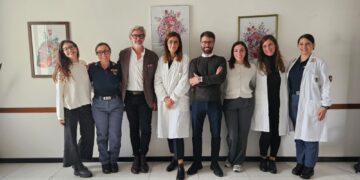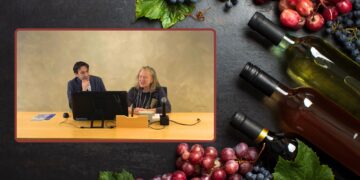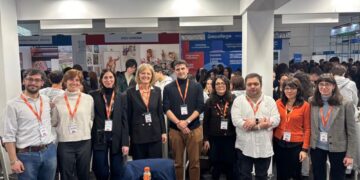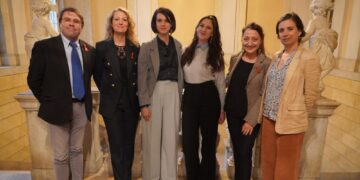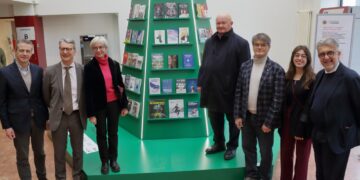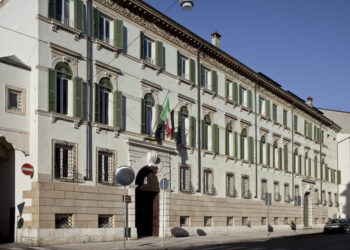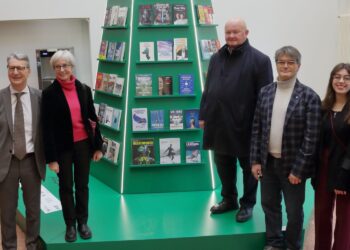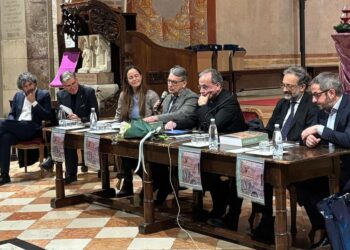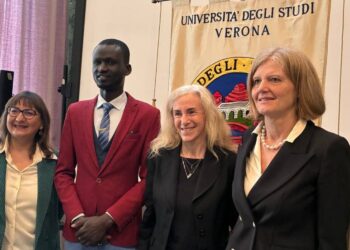Through photosynthesis, plants convert solar energy into living matter, which is used by humans for many purposes, such as obtaining food, medicines, fuel, or renewable raw material to be used in industry. However, when the absorbed light is in excess, the plant suffers and defense mechanisms are put in place to disperse the energy.
In the study “Identification of a pigment cluster catalysing fast photoprotective quenching response in CP29” the research group of the University of Verona analysed the process by which plants protect themselves from light in excess, outlining the mechanisms that govern the transfer of light energy to the molecular motors that use it, and defining, for the first time, the relevant molecular bases. Through this study an important progress has been made in understanding how to act to optimise the use of energy in plants.
The study, which was published in the scientific journal “Nature Plants”, was conducted by a research group from the Department of Biotechnology at the University of Verona, consisting of Zeno Guardini, Mauro Bressan, Roberto Caferri, Roberto Bassi and Luca Dall’Osto. Zeno Guardini and Roberto Caferri are two young PhD students in Biotechnology, while Mauro Bressan has recently joined the private sector. Luca Dall’Osto is the youngest full professor of the Department, while Roberto Bassi is among the founders of the Department, established in 1993.
“Our study has focused on light-capture events in plants, which generally occur in a very short time, in the order of a billionth of a second. While many aspects have been thoroughly investigated and explained, for 60 years biophysicists have been at a loss to explain how plants manage to cope with the constant changes in the amount of light they are exposed to. For plants, light is both the only source of energy and a threat. Indeed, the energy absorbed in excess of metabolic needs causes the formation of toxic molecules that can destroy molecular structures to the point of killing the plant,” explains Dall’Osto.
“When exposed to full sun, all plants absorb more light than their metabolism can use for growth,” Bassi continues. “To prevent the toxicity of excessive light, plants defend themselves by activating a ‘molecular switch’, which dramatically accelerates the speed of the already ultra-fast reactions, and transforms light energy into heat. This molecular mechanism is analogous to a common residual-current device (RCD), in which the overload of energy is dispersed avoiding damage to the system. Unlike the one in our house, the mechanism of the plants is reversible, and switches off as soon as the light becomes lower so that it can all be used for growth”.
The importance of this discovery lies in having located the origin of the protective response, and the molecular bases that allow the ‘relay’ to act. “Knowing the plant’s first line of defence, and knowing how it works, we can now think of modifying it, adapting it to the most diverse needs”, continues Dall’Osto “for example, we can adjust the response downwards to make plants grow faster in less illuminated environments such as greenhouses, or increase it to allow plants to grow in hostile environments when too much light is accompanied by other negative factors such as cold or drought. Today we know that the photosynthesis process is not optimised for maximum yield: plants prefer to produce less in return for less risk of being damaged when there is too much light. There is therefore significant room for improvement. The ambitious goal is to help increase the range of bio-products obtained from industrial supply chains based on sustainable processes”.
“The Department of Biotechnology at the University of Verona, the first to be established in Italy, was founded with the purpose of using the discoveries of modern molecular biology in order to develop a more sustainable and productive agriculture. Modern genetic technologies have been used to conduct this study, while biophysical and biochemical methods have been used to monitor the effects of any changes made. This is exactly what we aimed to do by founding this institute 25 years ago,” Bassi continues. “In light of our lab achievements, we hope policymakers will be far-sighted enough to reap the benefits of this research for the industry and for further research. Other studies are close to publication, such as one on a method for replacing herbicides with simple mineral substances, and one on a technology to convert wood into biodiesel. All these studies, including the one published today, were conducted using the same technologies for basic research”.
The Photosynthesis and Bioenergy laboratory is based in the Department of Biotechnology, directed by Paola Dominici. This study was funded by the University of Verona, and the European Commission.
